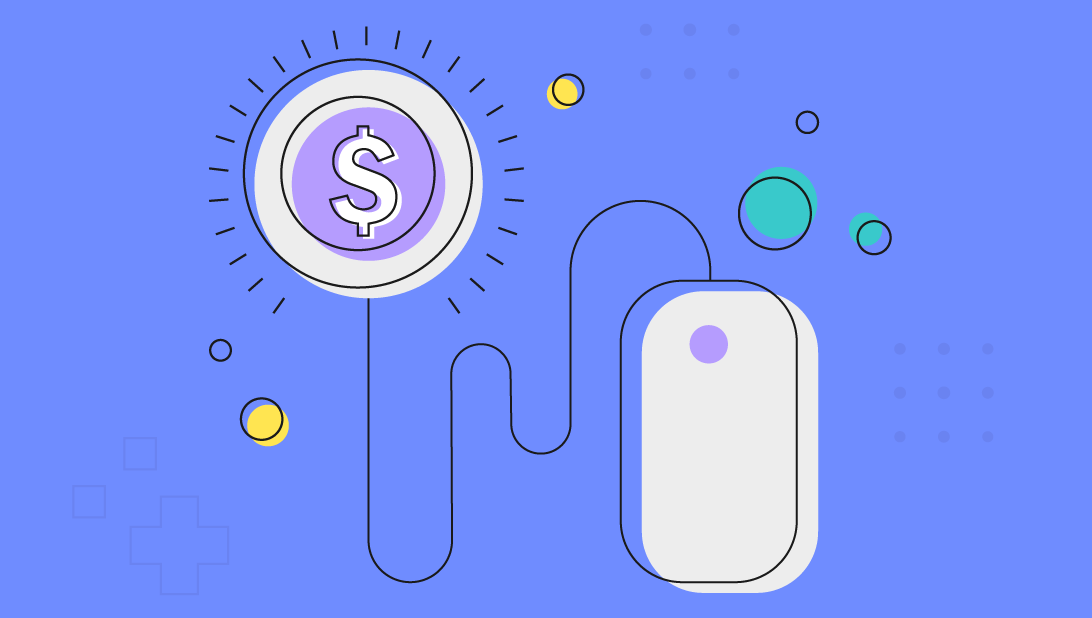



A SaaS product marketing plan must address factors most traditional marketing strategies don’t cover. For example, SaaS product marketing must go beyond finding and converting new leads to nurture relationships and increase customer lifetime value (CLV) through customer retention-focused SaaS marketing tactics.
Therefore, a solid SaaS product marketing strategy must consider the entire customer lifecycle, from awareness and conversion to loyalty and advocacy. Let’s explore steps you should take to build an effective SaaS marketing plan and maximize revenue.
Successful SaaS product marketing requires a solid foundation, starting from a big-picture view of your business. Create buyer personas to understand your target audience and define your unique selling proposition to help you communicate why they should buy your solution.
You may start with a hero statement or message, a phrase combining your "who” and "what”— the customers you serve and the value you deliver. Here’s an example of a hero statement for a personal finance SaaS product:
“[My SaaS company] is a hero to mothers in their 30s who struggle to stick to a tight budget.”
Your hero statement should reflect your customers’ pain points, how they try to address an issue, and how your SaaS product solves their challenges. By exploring and outlining what your customers want to achieve, you can discover how to market a SaaS product to them. This will enable you to better position your solution strategically to capture attention and gain traction.
When developing your SaaS digital marketing plan, you must also determine how you measure success by tracking the right marketing metrics. If you want to keep things manageable, focus on growing website traffic, email subscribers, and qualified leads while reducing churn rates.
After defining your target audience, it’s time to get in front of them, communicate your solution’s benefits, and turn them into leads.
Let's explore how SaaS content marketing, search engine optimization (SEO), and paid advertising fit into a wider SaaS product marketing strategy and how they can work together to help you grow visibility, build trust, drive high-quality traffic, and acquire leads.
Simply publishing blog posts isn’t enough to maximize the benefits of content marketing. To set the stage for success, define your content core by connecting the dots between your solution's benefits and the topics your audience cares about. This exercise can help you lay the foundation for your SaaS marketing plan and create relevant content to attract the right audience.
Then, you must identify the best channels to distribute and promote your content to high-quality prospects. Also, build a subscriber list with gated content to support effective B2B email marketing, one of the most effective ways for SaaS businesses to foster trust, nurture relationships, and drive conversions.
With most B2B tech buyers researching solutions online, you must get in front of them early in the customer journey through SEO and paid ads. Start with keyword research to identify popular search terms your target audience uses. For example, Google Analytics can show you which keywords prospects use in their searches to find your site.
Update your website and content with relevant keywords to signal relevance to search engine algorithms. Also, improve technical SEO by optimizing site load time, delivering a mobile-first experience, including a site map, using the correct canonical tags, and improving navigation.
Content marketing and SEO are cost-effective and necessary components of a comprehensive marketing plan for a SaaS company, regardless of industry, but they take time to yield results. Pay-per-click (PPC) ads can help you hit the ground running and acquire new leads immediately. They can also help drive highly targeted traffic to signal relevance to search engine algorithms and jumpstart your SEO efforts.
Your SaaS product marketing strategy must progress leads through your marketing funnel and convert them into paying customers. Here are the top techniques to include in your SaaS marketing plan:
Here’s where you put the email addresses you’ve collected with gated content to good use. Supported by a segmentation strategy and automation software, email marketing funnels can help you build relationships with leads, educate them about your solution, and persuade them to sign up for a free trial or connect with a sales rep.
You may also use email newsletters to share industry news, thought leadership content, product updates, webinar invites, special offers, and more. This SaaS marketing tactic can help your brand stay on prospects’ radars throughout the often-lengthy B2B buyer journey and build authority over time, so you’ll be top of mind when they’re ready to make a purchase decision.
Your B2B SaaS product marketing strategy should prioritize getting visitors to request a demo or sign up for a free trial. Include a banner with a clear call-to-action on every page of your website and optimize the registration process to minimize friction (e.g., simplify your forms and include clear instructions).
Once prospects get started with a free trial, your job isn’t over — it's time to convert them to a paid plan. Use case studies to show how other customers achieve results with your solution and provide tutorials to help users overcome adoption hurdles and achieve meaningful outcomes for a seamless onboarding experience.
SaaS customer retention is as essential as customer acquisition in SaaS product marketing. Besides retaining customers, your SaaS marketing plan should include upselling and cross-selling to increase CLV. Here’s how:
Email marketing is fundamental to any marketing strategy, SaaS products especially. It can not only help you build trust and convert leads but also allow you to continue nurturing relationships after prospects turn into customers. For example, you may send exclusive tips on using new features or applaud their achievements to highlight the value they get from your solution.
Implement data analytics, personalization techniques, and marketing automation software to promote add-on features or higher-level plans to increase CLV. You may also use email to solicit user feedback and make targeted improvements to boost SaaS customer retention.
Customer support may not seem like it’s related to marketing SaaS products, but it’s deeply tied to retention. Customers will only continue subscribing to a SaaS solution if they can use it successfully to achieve their goals. Therefore, customer success should be part of your SaaS customer retention strategy to ensure users get the most out of your software and stay satisfied with the experience.
Create comprehensive, user-friendly onboarding training, tutorials, a searchable knowledge base, and an FAQ section. Besides self-service resources, make it easy for users to reach a team member via multiple channels (e.g., email, web chat, phone, and social media) to address complex issues to avoid delays and frustrations.
Effective SaaS product marketing involves multiple steps and addresses various customer journey stages. You should leverage multiple channels to build trust and nurture relationships over time to acquire high-quality leads and retain them over the long run.
At Spot On, we know how to market a SaaS product. We can help you build a solid foundation for an effective and sustainable SaaS marketing plan. We start by considering every stage of the customer lifecycle and craft strategies and tactics to maximize your long-term marketing ROI.
Schedule a meeting now to discuss your marketing goals and see how we can help.


Rebecca Graves co-founded Spot On in 2012. As a partner and leader of client services, she takes immense pride in being in charge of “client happiness.” The role allows her to wield her problem-solving skills while fostering big-picture perspectives and team building. Rebecca’s more than 35 years of experience have equipped her to translate strategic planning expertise for the advancement of tech companies transforming the healthcare, financial, and legal industries.
Get the latest and greatest posts sent straight to your inbox.


